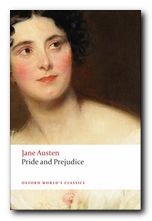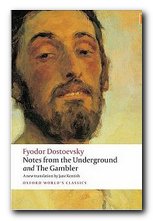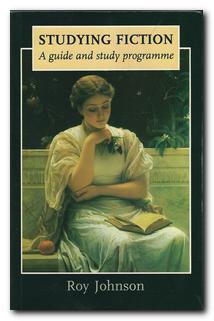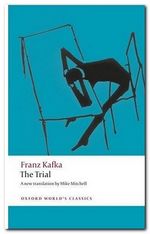the perspective of authors, narrators, and characters
Point of view – what is it?
An important part of analysing fictional narratives is to take into account the point of view from which a story is being told. Point of view is the manner or perspective from which events and characters are seen or being depicted. The term should not be confused with its everyday meaning of ‘a personal opinion’.
The point of view can be created and controlled in a number of different ways. For instance, by –
- the author’s attitude towards the events and characters – which could be comic, serious, or satirical
- the attitude of a narrator towards the events and characters being described
- the perspective of characters as they participate in the events of the narrative

Point of view – the author
A typical example of authorial point of view is the well-known ironic and witty opening of Jane Austen’s Pride and Prejudice (1813). She is poking gentle fun at her characters in a mild satirical manner:
It is a truth universally acknowledged that a single man in possession of a good fortune, must be in want of a wife.
 This way of seeing things influences very strongly the way in which readers are likely to understand the novel. It would be difficult almost to the point of impossibility to see Pride and Prejudice as anything other than a comedy of manners. So the point of view is a powerful factor in our understanding and interpretation of this narrative.
This way of seeing things influences very strongly the way in which readers are likely to understand the novel. It would be difficult almost to the point of impossibility to see Pride and Prejudice as anything other than a comedy of manners. So the point of view is a powerful factor in our understanding and interpretation of this narrative.
This example is an authorial point of view because Austen has chosen a traditional third person omniscient narrative mode. Readers can be confident that such remarks reflect the author’s own attitudes to characters and events – because she does not create any distancing effects between herself as author and herself as omniscient narrator. Direct authorial comment giving a point of view is sometimes referred to as ‘authorial generalisation’.
Point of view – the narrator
This occurs when the author creates a separate character to tell the story – who is called the narrator. And the narrator can be objective, biased, or even unreliable in relaying information, depending on how the author wishes to affect the reader. The narrator may or may not be an active participant in the events of the narrative. The important thing to keep in mind is that the author and the narrator are not necessarily one and the same.
Fyodor Dostoyevski chose the first person narrative mode for his novella Notes from Underground (1864). The protagonist and narrator is a fictional character who is not even given a name, and whose ‘story’ is a long tirade against society and even against himself:
I am a sick man … I am a spiteful man. I am an unattractive man. I believe my liver is diseased. However, I know nothing at all about my disease, and do not know for certain what ails me. I don’t consult a doctor for it, and never have, though I have a respect for medicine and doctors. Besides, I am extremely superstitious, sufficiently so to respect medicine, anyway (I am well-educated enough not to be superstitious, but I am superstitious). No, I refuse to consult a doctor from spite.
 Dostoyevski is now seen as one of the precursors of the movement in philosophy known as existentialism, and this novella is an exploration of an individual who is stripping away all comforting ideas and exposing his personal inner-demons in an age which is losing the reassurance of religious belief.
Dostoyevski is now seen as one of the precursors of the movement in philosophy known as existentialism, and this novella is an exploration of an individual who is stripping away all comforting ideas and exposing his personal inner-demons in an age which is losing the reassurance of religious belief.
The importance of point of view in this case is that the reader is forced to accept this rather perverse and unpleasant man’s vision of the world, because no alternative is made available to us. Dostoyevski makes no attempt to present his character as attractive or likeable. We are simply being invited to consider his peculiar and often contradictory views.
When authors create first person narrators in this way, there is often a temptation to think that the narrator reflects the author’s own views. In some fiction (usually of poor quality) this might be the case; but in general (and certainly in good quality work) this is not or may not be true.
Many traditional ‘life history’ fictions use a first person narrator – such as Daniel Defoe’s Robinson Crusoe (1719) Jonathan Swift’s Gulliver’s Travels (1726) and Charles Dickens’ David Copperfield (1850). This device usually has the effect of drawing the reader close to the narrator as a fictional character and lending credulity to their account of events.The reader is being encouraged to think of the character as a ‘real’ person.
 Studying Fiction is an introduction to the basic concepts and technical terms you need when making a study of stories and novels. It shows you how to understand literary analysis by explaining its elements one at a time, then showing them at work in short stories which are reproduced as part of the book. Topics covered include – setting, characters, story, point of view, symbolism, narrators, theme, construction, metaphors, irony, prose style, tone, close reading, and interpretation. The book also contains self-assessment exercises, so you can check your understanding of each topic.
Studying Fiction is an introduction to the basic concepts and technical terms you need when making a study of stories and novels. It shows you how to understand literary analysis by explaining its elements one at a time, then showing them at work in short stories which are reproduced as part of the book. Topics covered include – setting, characters, story, point of view, symbolism, narrators, theme, construction, metaphors, irony, prose style, tone, close reading, and interpretation. The book also contains self-assessment exercises, so you can check your understanding of each topic.
Buy the book at Amazon UK
Buy the book at Amazon US
Point of view – the character
It is also perfectly normal for authors to give an account of events from the perspective of a character (or characters) in their narratives. This enables the author to create a credible vision of the world in which the character exists, and to invite readers to share (or reject) their personal point of view. This view can shift from one character to another, or it can stay with one character.
Franz Kafka’s dark and expressionistic novel The Trial (1925) opens with an innocent man being arrested:
Somebody must have been telling lies about Joseph K, for one morning, without having done anything wrong, he was arrested. Frau Grubach’s cook, who brought him his breakfast every day, did not appear. That had never happened before. For while K waited—from his pillow he saw the old woman who lived opposite watching with, for her, quite unusual curiosity—but then, both perplexed and hungry, he rang. Immediately there was a knock at the door and a man he had never seen in the apartment came in. He was slimly yet solidly built and was wearing a close-fitting black suit which, like an outfit for travelling, was equipped with a variety of pleats, pockets, buckles, buttons, and a belt that made it appear especially practical without its precise purpose being clear.
 After the opening sentence of the narrative, all the information we are given is delivered from Joseph K’s point of view. The non-appearance of his breakfast; the absence of the cook; his being observed (whilst in bed!) by an old lady opposite; and the sudden appearance of a stranger in his room – who has come to arrest him. Sometimes authors use the points of view of a number of characters in order to create a multi-dimensional account of reality which might be more complex and therefore more convincing than an account from a single perspective.
After the opening sentence of the narrative, all the information we are given is delivered from Joseph K’s point of view. The non-appearance of his breakfast; the absence of the cook; his being observed (whilst in bed!) by an old lady opposite; and the sudden appearance of a stranger in his room – who has come to arrest him. Sometimes authors use the points of view of a number of characters in order to create a multi-dimensional account of reality which might be more complex and therefore more convincing than an account from a single perspective.
William Faulkner uses an interesting version of this mode in his novel As I Lay Dying (1930) in which members of a poor southern American family are transporting their dead mother in a coffin to be buried in a distant town. The narrative is a series of interior monologues in which each of the the characters reflect in turn on the others. This even includes the dead mother, from inside her coffin.
Strategies of this kind become in effect a series of overlapping first person narratives. The English novelist Laurence Durrell pushed this approach even further in his sequence of novels The Alexandria Quartet (1957-1960). Four novels cover the same set of events as seen (largely) from the point of view of the four characters – Justine, Balthazar, Mountolive, and Clea – who are involved in them.
Virginia Woolf developed an approach to narrative which used this device at a micro level. In her novel Mrs Dalloway, the reader is invited to view events largely from the point of view of her protagonist Clarissa Dalloway, but from time to time the view shifts momentarily to that of other characters:
She stiffened a little on the kerb, waiting for Dornall’s van to pass. A charming woman Scrope Purvis thought her (knowing her as one does know people who live next door to one in Westminster); a touch of the bird about her, of the jay, blue-green, light, vivacious, though she was over fifty, and grown very white since her illness. There she perched, never seeing him, waiting to cross, very upright.
 The character Scrope Purvis never appears again in the novel, but for this single paragraph as they pass each other in the street we are invited to share his view of Clarissa. We see her from the point of view of a close neighbour, who knows she has been ill, and who admires her appearance and her manner. Later we will see her from the point of view of a close friend, an old admirer, and from the slightly antagonistic view of her own daughter.
The character Scrope Purvis never appears again in the novel, but for this single paragraph as they pass each other in the street we are invited to share his view of Clarissa. We see her from the point of view of a close neighbour, who knows she has been ill, and who admires her appearance and her manner. Later we will see her from the point of view of a close friend, an old admirer, and from the slightly antagonistic view of her own daughter.
This fluctuating point of view helps to generate what might be called a ‘three-dimensional’ view of the character, and it is closely associated with Virginia Woolf’s belief in the fluidity and relativity of human character – that a person can be one thing to one person and somebody quite different to another.
© Roy Johnson 2015
More on How-To
More on literary studies
More on writing skills